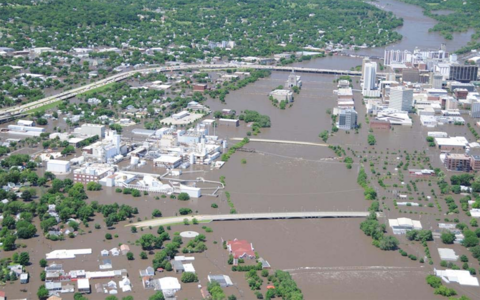
Many cities in the United States have experienced or will experience devastating losses caused by a natural disaster. In the aftermath of a disaster, the question communities grapple with is how to invest in recovery. Understandably, the focus tends to be on building back as quickly as possible. But it may actually make more economic sense to rebuild better than before.
In June 2008, the Midwestern United States experienced severe riverine flooding, a result of heavy rainfall atop soils oversaturated from heavy winter snowfall and an unusually wet spring. The Cedar River in Cedar Rapids, Iowa, crested at over 9.4 meters (31 feet) — a level that far exceeded the previous record set in March 1961. The flooding resulted in an estimated $5.4 billion in losses, affecting about 14% of the city’s buildings and infrastructure. Fortunately, the city avoided any flood-related fatalities.
The city of Cedar Rapids asked its citizens what the best course of action should be going forward. Over the next 10 months, the city developed a community-led framework to not only recover from the flood, but also become resilient to future flooding. At the core of the framework is an extensive flood-control system, a 20-year capital project that is estimated to cost $550 million. In addition, the framework emphasized neighborhood revitalization through commercial and residential development to attract a younger, more dynamic workforce. In other words, the citizens of Cedar Rapids chose to rebuild better.

